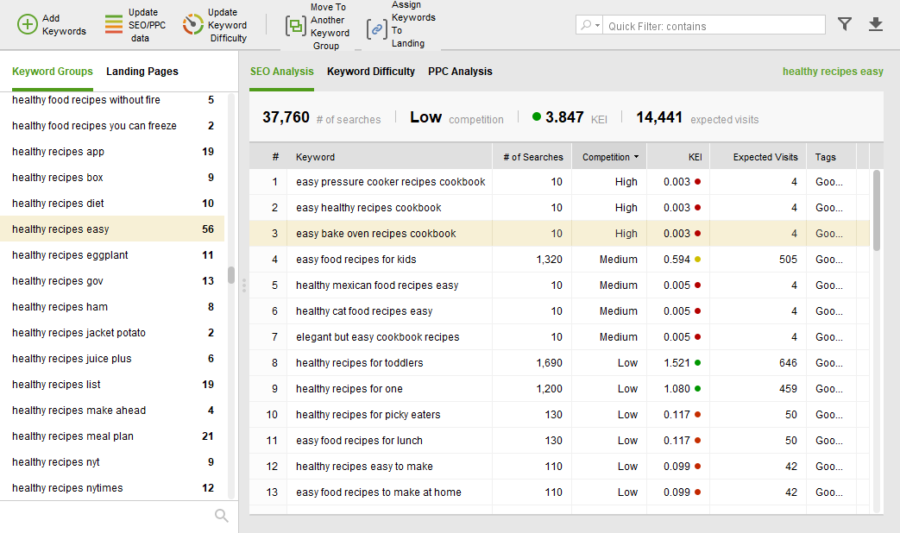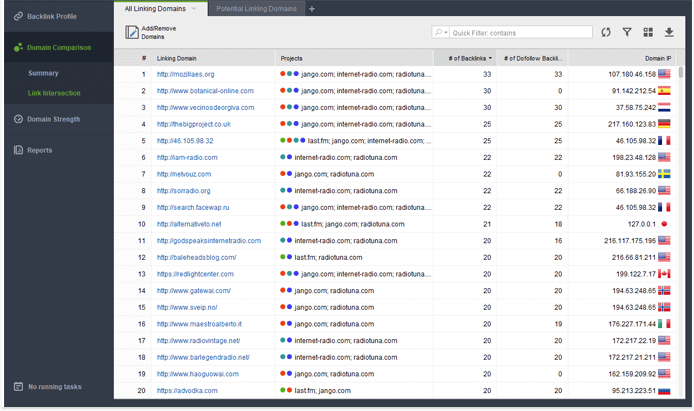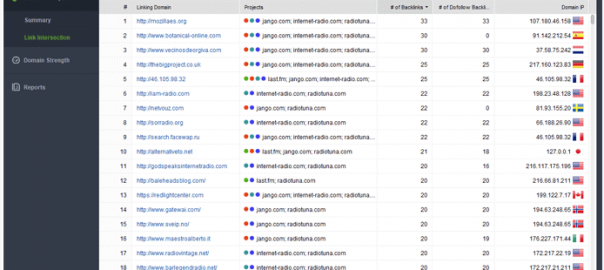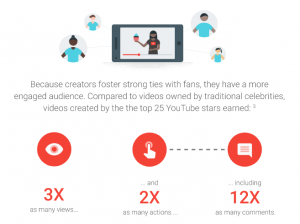— November 14, 2017
The funny thing about Google ranking factors is that there are heaps of them. In such a situation, it is essential to remember that the main proven ranking factors won’t cease to exist in the near future. As for the new waves, of course it is important to react to them and apply relevant changes. Unfortunately, it is really hard to keep up with an ever-evolving search engine ranking mechanism. Thus, it is comforting to know that, mostly, all the new trends touch upon the same good old ranking factors.
Let me remind you about them.
1. Content relevance.
Since keyword stuffing was more or less eradicated by Hummingbird algorithm, content became the king of the ranking factors. Indeed, what can be more important than unique content that is a perfect answer to the query? Google also thinks like that, which explains the shift to the semantic-based search. Just check it out, according to the SearchMetrics study 53% of the top 20 queries have keywords in their title tag, and less than 40% of landing pages have keywords in their H1 (NB: still does not hurt to use a fair amount of keywords in a title and meta description).
So what has this semantic search brought upon us?
As I said, nothing changes in a revolutionary way – you still have to do your keyword research. Though, there are more things and methods that you have to pay attention to.
– Semantic keyword groups.
The era of sporadic keyword usage in the content is gone. Now you have to gather keywords into semantic-based groups, and only then craft them into your content.
How to do this?
Once you have done your keyword research, you will end up with a very long list of very diverse keywords and keyword phrases. The next important step is to segment all these terms according to their semantics and user intent. After this segmentation, it will be much easier for you to build your content for particular pages around each semantic group of keywords.
For example, you can use SEO PowerSuite’s Rank Tracker that allows its users to research for keywords with the help of a number of methods, and it further automatically combines them into groups on the basis of their semantic similarity:

– Questions.
As you run a website to present your business to people, you need to build your content around those questions in people’s minds that will lead them to clicking your link. It is also super important in view of an overwhelming growth of voice search where people use natural-sounding phrases and questions instead of the odd query language.
How to do this?
Try to research the questions your customers are asking and offer quick answers and immediate solutions on your blog, FAQ pages, and social media posts.
For example, a Google’s “People also ask” box is just a goldmine for question ideas. Once you click on one of the queries, you receive a few more. After some time, some questions repeat, but on the whole, it is a magic box for new topics.
As for handy SEO tools, try SEO PowerSuite Rank Tracker’s Common Questions keyword research method. It will give you million question ideas on the basis of your common keywords.
2. Backlinks.
Though SearchMetrics foretells the downward trends of backlinks’ ranking power due to the two reasons:
– possibility for a website to achieve a high Google ranking even with far fewer links than its competitors (depending on the topic).
– increase in mobile search queries, as URLs on mobile devices are often liked or shared, but rarely actively linked.
…backlinks are still authoritative enough for search engines to understand the page and find relevant URLs. Of course, providing they are of high quality, from diverse and authoritative domains.
What do you need to attain this?
Step 1. Create comprehensive content (we discussed above how to do that).
Step 2. Promote and share it relentlessly, though, where it makes sense to do so.
In case you manage to make these two steps, you pass three signals to Google at once:
- Number of backlinks – this signal used to be important, though now there is a tendency to rank high even with fewer links if they are of good quality. Plus, Google rather counts the number of linking domains – links coming from the same domain carry little weight.
- Link score – this metric is made up by a link’s individual quality score and the number of links to the site.
- Anchor text relevancy – your backlinks’ anchor text tells search engines what your page is about, so it should be keyword-optimized. However, over-optimized anchor text is punishable by Google’s Penguin.
How to do this?
Analyze the backlinks.
It is a wise thing to first research what works for your competitors before you start your link-building campaign. Look at competitors’ backlinks history and link scores and then compare with the same data for your website. This functionality is fully available in SEO PowerSuite’s SEO SpyGlass.
When you are done with the comparative analysis, you can engage in finding new link opportunities through domain comparison and link intersection:

Diversify your anchor texts.
All in all, you should focus on the three major types of a natural anchor text:
- Keyword-optimized anchor text— anchor text with your targeted keywords.
- Brand name or brand URL anchor text— or better yet, a brand name + a keyword.
- Generic anchor text— according to the study by Search Engine Watch, over 50% of all generic anchor texts have one to three words in it. So when using generic word anchors, shift to three words, like “check it out, visit the website, learn more here, etc.”
3. Technical SEO factors.
Once you have comprehensive content, it is super important to make it easy for users and search engines to find it. It means that your website should be optimized from a technical point of view. There are two main factors that you should pay attention to.
Mobile-friendliness.
Google is continuing its shift to mobile-first indexing that will most probably be complete in mid 2018. It means that Google’s index will primarily be crawling a mobile version of a site’s content to learn how it should be indexed in search. Thus, it does not only mean that to be mobile-friendly is a must, it also means that both your desktop and mobile versions should be identically optimized and optimized in a way that is efficient for a user.
It is not just Google that is shifting to mobile, users actively utilize their smartphones to search for everything. In 2016 more than 50% of search queries came from mobile devices. The predictions for 2017 is 75%, with 60% of global internet advertising dollars coming from mobile advertising in 2018.
What’s more, users want everything to be really fast. According to the Think with Google’s whitepaper on Micro-Moments, 29% of smartphone users will immediately switch to another site or app if it doesn’t satisfy their needs (for example, they can’t find information or it’s too slow). And most of them choose a brand they do not know providing it is fully equipped to provide a service they need right in this moment.
What does it mean for you? You have to be there at those moments and make sure a mobile version of your website is fully optimized to be efficient in terms of content, interface, and speed.
How to do this?
- Use Google Search Console to add and verify the mobile version of your site.
- Check you mobile page’s load time with the PageSpeed Insights tool. The tool will also generate custom recommendations to increase your site’s speed.
- You can get the information on the state of your mobile version and comprehensive recommendations for your mobile optimization from the SEO PowerSuite’s WebSite Auditor.
- If your page is far from mobile perfection, you should act right now. One of the best options is responsive design. It is rather simple, widely used, and recommended by Google itself. If you use WordPress (or any CMS), choosing a responsive templatefor your site is about all it takes.
If your site is HTML-coded, then you have to sweat a bit, but there is enough documentation on adapting responsive design for web developers. Do not be afraid to spend a good amount of time on getting every aspect right, it is worth the investment.
Page speed.
Page speed is another factor considered important by Google. Desktop websites should load in 2 seconds or less. Plus, speed has a critical impact on user experience. Judge by yourself, the slower a page loads, the more irritated you get. Thus, slower pages have higher bounce rates and lower conversion rates.
How to do this?
Speed is usually heavily influenced by uncompressed resources: scripts, images, and CSS files. Thus, this is the first thing to cater to.
4. User signals.
It is no secret that Google has access to a tremendously big database of its search results: from Chrome, Google Analytics, and Android. Thus, all the user responses are efficiently measured, and the results of these measurements, combined with the information about clustering of user intentions and Machine Learning methods, are converted into an effective system for evaluating the relevance of online documents in real time.
There are two factors that you have to keep in mind and optimize for.
Click-through rate.
Google does not name a click-through rate (CTR) a ranking signal, however, a number of Google patents imply that CTR has a huge impact on rankings. Plus, we should not forget about real-life experiments with both real users and bots that show that (only) organic CTR seems to influence rankings in real time.
How to do this?
- Use Google Search Console to get all your query data and see which pages have the lowest CTR. CTR averages vary depending on the type of the query, as a rule, you can expect a 30 percent CTR for a #1 result, 15 percent for #2, and 10 percent for #3. If some numbers are significantly lower, check what might be wrong and try to fix the problem so that it doesn’t pull you to the bottom.
- Check Google Analytics for the values of other engagement metrics (like bounce rates, time on site, etc.)
- Use Structured Data Markup to make your pages look attractive in the SERPs.
- Try to optimize your pages to return a featured snippet in the SERPs.
- Combine the keywords in your title with emotional words. It is believed that such emotions as anger, disgust, affirmation, and fear trigger higher CTR.
- Use social media to spread the word about your brand and increase your credibility.
Social signals.
Though social media life has become pretty relevant over the past years, social signals are one of the most controversial factors in SEO. Google goes all the way from implying that social factors do influence rankings and that they do not. In spite of all the statements, it is true that social media pages are indexed, so they are able to appear in the SERPs.
Plus, successful social activities make your content visible to the right group of users, which increases your engagement metrics. The more visits you get, the more sharing you receive that leads to more links to your content.
How to do this?
- Choose your platform.
Not all social accounts are suitable for a particular kind of business or activity. Twitter might be not as efficient as a blog or an Instagram account. How should you understand what is more suitable? Sneak peek at the way your competitors do it.
- Make the first move.
The first moves for social inclusion are pretty simple — you create a public profile and put the link to your website, so it can be clicked in case people are interested and need to go further.
- Make it easy to share you content.
Add social media buttons to your page. For WordPress sites, there’s a selection of ready-made plugins available that let you do just that. For sites that don’t use a CMS, you can get a ready-made HTML code for the social buttons here.
- Make a contact.
Immediate response now means a lot. Try to engage with your audience, react to comments, both positive (thank people) and negative (suggest a solution).
- Monitor your online presence.
As your social media reach grows, you may want to use a social media monitoring platform (like Awario) to track mentions of your brand and respond to them in time.
The thing is, once there is some kind of news or just rumors about this or that factor becoming ranking or losing ranking capabilities, you can hear stamping of thousands of feet that run to prove or demolish this new information. It is easy to get swiped by this wave, however, it is much wiser to stay aside and put your stakes on the tactics that will definitely stay with us for a while.
Digital & Social Articles on Business 2 Community
(70)






